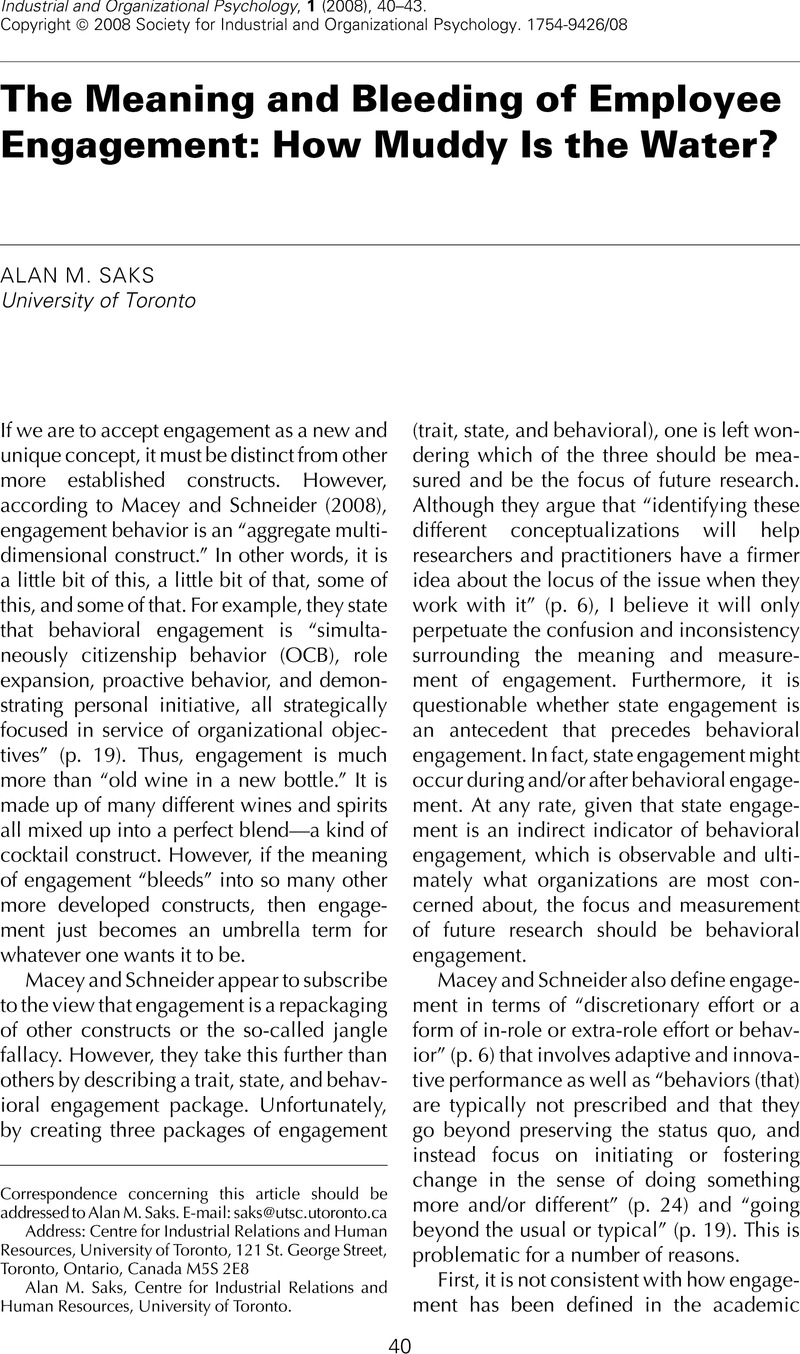Crossref Citations
This article has been cited by the following publications. This list is generated based on data provided by Crossref.
Zigarmi, Drea
Nimon, Kim
Houson, Dobie
Witt, David
and
Diehl, Jim
2009.
Beyond Engagement:Toward a Framework and Operational Definition for Employee Work Passion.
Human Resource Development Review,
Vol. 8,
Issue. 3,
p.
300.
Walumbwa, Fred O.
Wang, Peng
Wang, Hui
Schaubroeck, John
and
Avolio, Bruce J.
2010.
RETRACTED: Psychological processes linking authentic leadership to follower behaviors.
The Leadership Quarterly,
Vol. 21,
Issue. 5,
p.
901.
Medhurst, Adrian
and
Albrecht, Simon
2011.
Salesperson engagement and performance: A theoretical model.
Journal of Management & Organization,
Vol. 17,
Issue. 3,
p.
398.
Nimon, Kim
and
Zigarmi, Drea
2011.
The Assessment of a Multinational Using the Employee Work Passion Model.
Advances in Developing Human Resources,
Vol. 13,
Issue. 4,
p.
494.
Medhurst, Adrian
and
Albrecht, Simon
2011.
Salesperson engagement and performance: A theoretical model.
Journal of Management & Organization,
Vol. 17,
Issue. 3,
p.
398.
Shuck, Brad
2011.
Integrative Literature Review: Four Emerging Perspectives of Employee Engagement: An Integrative Literature Review.
Human Resource Development Review,
Vol. 10,
Issue. 3,
p.
304.
Zigarmi, Drea
Nimon, Kim
Houson, Dobie
Witt, David
and
Diehl, Jim
2011.
A preliminary field test of an employee work passion model.
Human Resource Development Quarterly,
Vol. 22,
Issue. 2,
p.
195.
Nimon, Kim
Zigarmi, Drea
Houson, Dobie
Witt, David
and
Diehl, Jim
2011.
The Work Cognition Inventory: Initial evidence of construct validity.
Human Resource Development Quarterly,
Vol. 22,
Issue. 1,
p.
7.
Welch, Mary
2011.
The evolution of the employee engagement concept: communication implications.
Corporate Communications: An International Journal,
Vol. 16,
Issue. 4,
p.
328.
Saks, Alan M.
2011.
Workplace spirituality and employee engagement.
Journal of Management, Spirituality & Religion,
Vol. 8,
Issue. 4,
p.
317.
Ludwig, Timothy D.
and
Frazier, Christopher B.
2012.
Employee Engagement and Organizational Behavior Management.
Journal of Organizational Behavior Management,
Vol. 32,
Issue. 1,
p.
75.
VOLPONE, SABRINA D.
AVERY, DEREK R.
and
McKAY, PATRICK F.
2012.
Linkages Between Racioethnicity, Appraisal Reactions, and Employee Engagement.
Journal of Applied Social Psychology,
Vol. 42,
Issue. 1,
p.
252.
Bhatnagar, Jyotsna
2012.
Management of innovation: role of psychological empowerment, work engagement and turnover intention in the Indian context.
The International Journal of Human Resource Management,
Vol. 23,
Issue. 5,
p.
928.
Reissner, Stefanie
and
Pagan, Victoria
2013.
Generating employee engagement in a public–private partnership: management communication activities and employee experiences.
The International Journal of Human Resource Management,
Vol. 24,
Issue. 14,
p.
2741.
Chughtai, Aamir Ali
and
Buckley, Finian
2013.
Exploring the impact of trust on research scientists' work engagement.
Personnel Review,
Vol. 42,
Issue. 4,
p.
396.
Parkinson, Ann
and
McBain, Richard
2013.
Individual Sources, Dynamics, and Expressions of Emotion.
Vol. 9,
Issue. ,
p.
69.
Liao, Fang-Yi
Yang, Liu-Qin
Wang, Mo
Drown, Damon
and
Shi, Junqi
2013.
Team–Member Exchange and Work Engagement: Does Personality Make a Difference?.
Journal of Business and Psychology,
Vol. 28,
Issue. 1,
p.
63.
Chughtai, Aamir Ali
2013.
Linking affective commitment to supervisor to work outcomes.
Journal of Managerial Psychology,
Vol. 28,
Issue. 6,
p.
606.
Shuck, Brad
Ghosh, Rajashi
Zigarmi, Drea
and
Nimon, Kim
2013.
The Jingle Jangle of Employee Engagement.
Human Resource Development Review,
Vol. 12,
Issue. 1,
p.
11.
Banihani, Muntaha
Lewis, Patricia
and
Syed, Jawad
2013.
Is work engagement gendered?.
Gender in Management: An International Journal,
Vol. 28,
Issue. 7,
p.
400.



